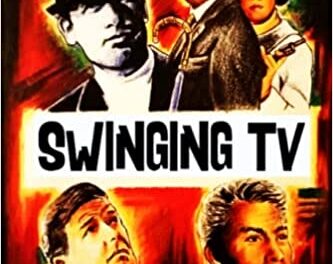On Tuesday this week I arrived back in Australia, early in the morning, from three weeks conferencing and researching in Europe. I spent the day engaged in the gently restorative process of unpacking, washing, and sorting through the accumulated notes and debris of scholarly behaviour. By twilight I was beginning to feel properly banjaxed and adjourned outside to my garden deck, Ipad in hand, to catch up on emails, steadily replying, deleting and offering assurances that yes I was back, but would return after a couple of days’ leave. While watching the Australian Broadcasting Corporation’s excellent catch-up app I noticed our copy of Yates’ Garden Guide on the table. This is the product of a New Zealand gardening company which began publishing the Guide shortly after it was established at the end of the nineteenth century, and is the most popular gardening book in Australia. Not that ours is used much: the garden is a small modest affair, mostly a lawn, a tree and a few potted plants – a backdrop and mingling area for barbecues, drinks and other social and family kinds of entertainment – but the Guide is a useful resource nevertheless and an emblem of suburban horticultural good intentions. I’d never really looked at it before.
Perhaps it was my slightly jetlagged subjectivity, but as I read it my mind went into analogy-mode, playing a game of ‘this is like this is like this’. After the first chapter on the historical and national background to Australian gardens (which I skipped) chapter two, ‘Garden Design’, begins grandly by asserting a declaration of the ‘principles of garden design,’ and I could not help but get it tangled up with my recent conference papers that were concerned with aesthetics and the medium. ‘A good garden is one which offers a multitude of pleasures,’ claims the Guide, ‘a place to relax by yourself or with friends, bounty to cook and eat, or even just a piece of living artistry to contemplate from the couch on a rainy day.’ Like television then, its pleasures are diverse and many; like television a garden can offer utility, aesthetic delight, the sense of nourishment we sometimes get after consuming another crop of our favourite show. There is the homely everydayness of both, available for gaze or glance, the setting before or in which we stage our activities; or the object of them. There are genres of plant and tree life, forms of spatial handling to encourage mood and atmosphere, even – and this is getting really Walden-esque – a kind of ‘news’ in the anchoring of garden and television to calendrical time, its daily immediate shifting as part of a seasonal journey.
Now, I’m fully aware this kind of analogy-mongering can get silly, in the, ‘That’s like Our Lord Jesus’ mode; but consider how suggestive these bullet-point principles of design from the Guide are for our thinking about fine television:
- Utilising and dealing with space.
- Creating unity: linking the whole design so there is relationship between elements.
- Maximising views and vistas.
- Establishing a foundation for mood and response.
This expansive sense of design allows richness to emerge and evolve rather than settle into systems and stable forms; the restless growth of a garden is planned of course but it is necessarily hostage to organic spontaneity – some welcome, some not. And the Guide’s principles are appropriately general and abstract in these early pages – first steps before a more schematic, systematised filling out of the practical details. Designing and criticising television may begin from such lofty heights but we also need to get down to the heavy spadework of sorting, assessing and comparing the results of such designs – not everything works, and not everything will be habitable or hospitable in ways that suit our preferences.
The work that has been done on gardening and television, notably by Charlotte Brunsdon and Frances Bonner – two of the most careful, attentive and patient scholars I know, as well as keen gardeners themselves – has tended to engage with those shows, which we would now call lifestyle programming, in terms of their social and cultural resonances and provocations. But I think there is something a bit more abstractly fascinating about the way the two – let’s call them mediums – are growing together. By this I’m referring to the rise of mobile television watching and home Wi-Fi which allowed me, for example, to watch the ABC live news outside in the garden at my table. And I may have been prompted to the thought that television and gardens belong together during the stopover in Singapore that broke up my twenty hour flight from London to Australia. Upstairs at Changi Airport, for those who crave the open air, as well as the sustenance of drink and smoke, there is the Cactus Garden, a gloriously rich collection of the world’s finest cacti. As I sat there Monday night, steeling myself for the final leg, I noticed many other travellers who like me, faces lit in the twilight by the glow of their smartphones and tablets were watching and interacting with screens among the beautiful flora of an international garden. Perhaps one day the Guide will incorporate this new behaviour in one of its principles of garden design.
Jason Jacobs is Reader in Cultural History in the School of English, Media Studies and Art History, University of Queensland. He is author of The Intimate Screen and Body Trauma TV. He is currently working on an Australian Research Council funded project called ‘Worldwide: the history of the commercial arm of the BBC’. His BFI TV Classic on Deadwood has just been published. He is writing a book on David Milch for the Manchester University Press Television Series and is co-editor with Steven Peacock of the forthcoming collection Television: Aesthetics and Style (Continuum).








